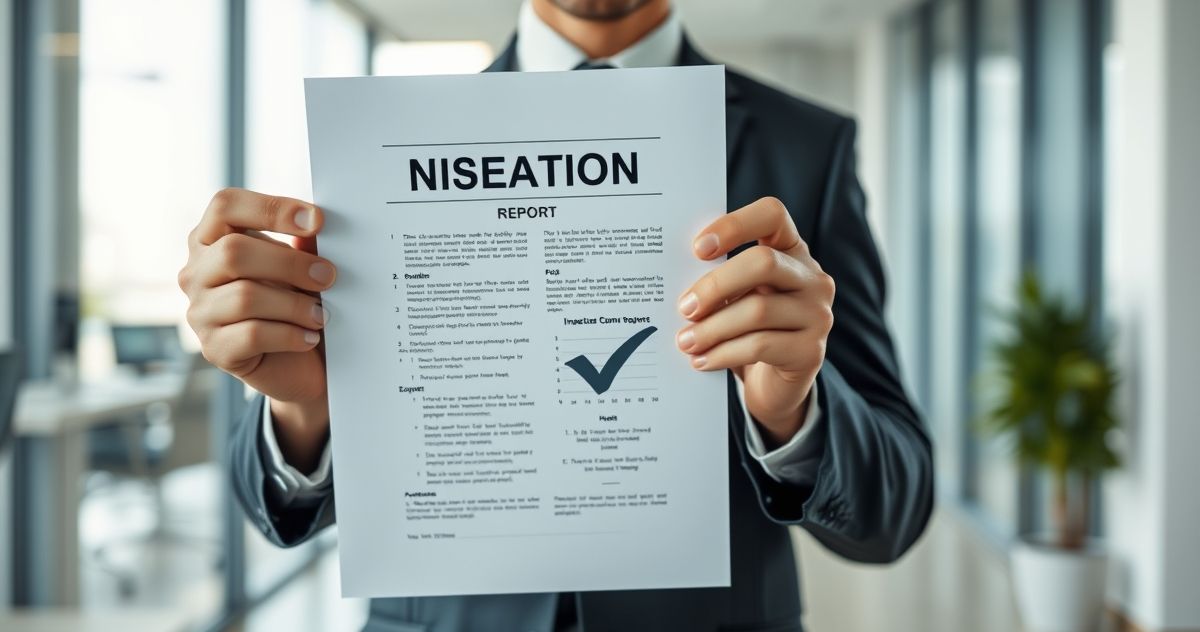A Final Compliance Inspection Report (FCIR) serves as the definitive verification that a project, property, or business process meets all agreed-upon codes, regulations, and contractual obligations before final approval or financial closing. This report is generally issued after the last in a series of inspections, acting as the official “all-clear” to proceed with key milestones such as the final release of construction loan funds or obtaining occupancy permits.
How the Final Compliance Inspection Report Process Works
The process begins when a project reaches substantial completion, signaling it’s ready for the final inspection. An authorized inspector—either a third-party professional, government official (e.g., city building department), or lender-appointed expert—conducts a thorough review. They systematically compare the completed work against blueprints, regulatory codes, safety standards, and loan or contract terms.
The inspector identifies any “punch list” items—minor issues or deficiencies to be corrected. The FCIR will conclude with one of three outcomes: a full pass, a pass with conditions (minor fixes with later verification), or a fail that requires rework and re-inspection before approval.
Common Applications of FCIRs
-
Construction Loans: Lenders release funds in stages called “draws.” The FCIR confirms the project meets all building codes and contract terms before releasing the final loan payment. Learn more about Construction Loan Closeout.
-
Certificate of Occupancy (CO): Local building departments perform final inspections to verify safety and code compliance before issuing a CO, permitting occupation of a new or renovated building. See Certificate of Occupancy Requirement.
-
Environmental Compliance: Agencies inspect industrial or remediation efforts to confirm adherence to environmental laws.
-
Business Licensing and Safety: Inspections ensure facilities meet health codes or workplace safety regulations before licensing or operation.
Who Benefits from FCIRs?
- Borrowers and Property Owners: Ensures the property is safe, legal, and meets all requirements before final loan funds are disbursed.
- Contractors and Developers: Validates quality of work before receiving final payments.
- Lenders: Minimizes risk by verifying collateral meets standards.
- Regulatory Authorities: Enforces public safety and legal compliance.
- General Public: Helps guarantee safe buildings and environmentally sound business operations.
Tips for Preparing for an FCIR
- Familiarize yourself early with applicable codes and contractual requirements.
- Keep detailed documentation of plans, permits, and prior inspections.
- Maintain communication with contractors, architects, and lenders.
- Conduct pre-inspection walkthroughs to identify and correct issues.
- Address any deficiencies promptly to avoid delays.
Common Misconceptions
- The FCIR is not a mere formality but a comprehensive final verification.
- Passing earlier phase inspections does not guarantee FCIR approval since it assesses the complete project.
- Even minor issues can cause failure and project delays.
What Happens After the FCIR?
| Outcome | Description |
|---|---|
| Pass | Final approvals granted; funds disbursed; project moves forward. |
| Pass with Conditions | Minor fixes required; verification follows before completion. |
| Fail | Major corrections needed; project on hold until resolved. |
Frequently Asked Questions
-
Who performs the FCIR? It varies from independent inspectors, government building departments, to regulatory agencies, depending on context.
-
What if my project fails? Deficiencies must be remedied and re-inspected before final approval.
-
How long does an FCIR take? Inspections range from a few hours for residential projects to several days for large commercial sites.
-
Is an FCIR always required? Not always by name, but the final inspection concept is common in construction, real estate, and compliance.
For more about the loan process and compliance, see Construction Loan Closeout and Certificate of Occupancy Requirement.
Authoritative Source
- For further details on inspections and permits, visit the U.S. Small Business Administration’s guide on permits and licenses.
- OSHA information on inspections: osha.gov/inspections
Sources:
- Investopedia, “Construction Loan: How It Works, Types, and Requirements” (https://www.investopedia.com/articles/personal-finance/030915/construction-loan-how-it-works.asp)
- Occupational Safety and Health Administration (OSHA), “OSHA Inspections” (https://www.osha.gov/inspections)



